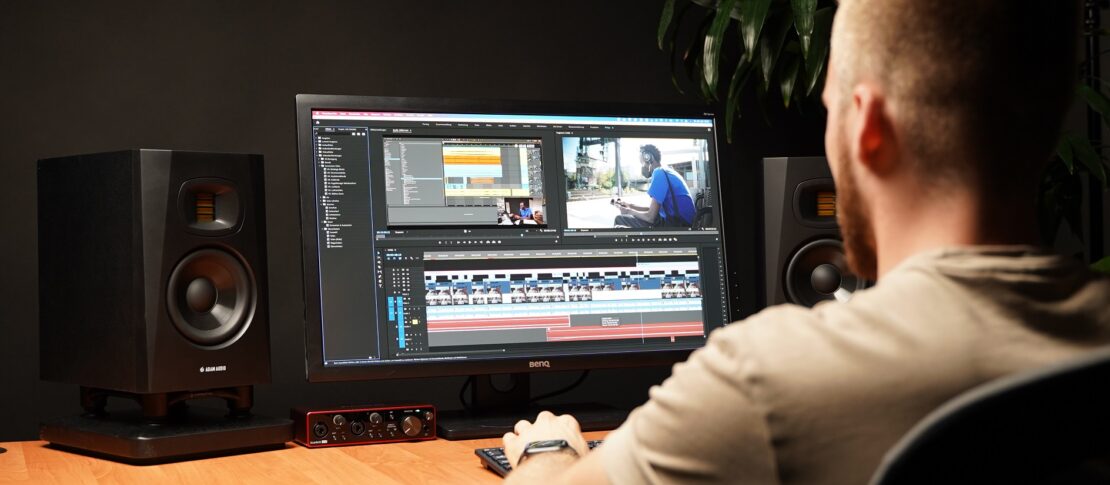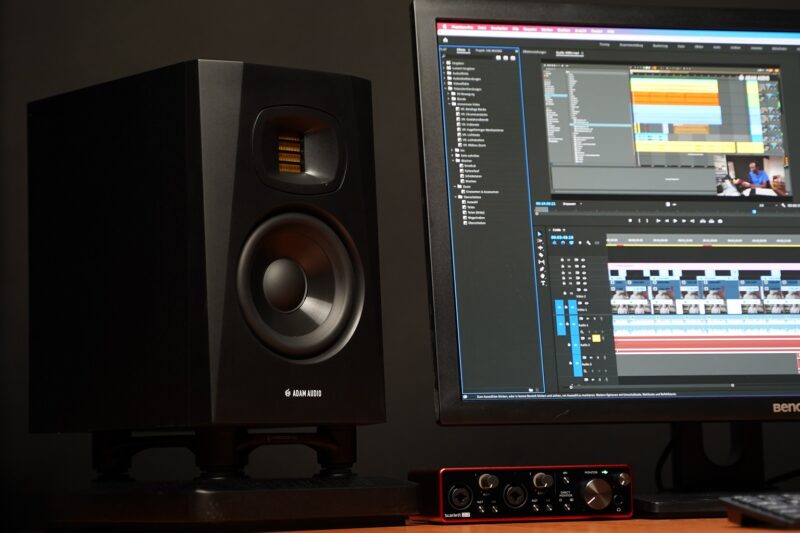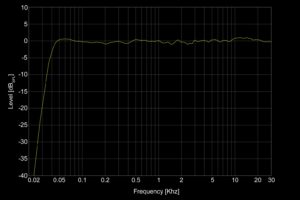
Understanding the Importance of Sound Design in Film
It’s hard to believe, but 50 % of what makes your film is often the number one most overlooked process in post-production film making. Naturally, visuals are always the number one most
important thing, but following behind in close second is sound design.
For all the cinematic beauty of your visuals, an audience will quickly turn off if the sound design is not up to par. Think about it. If you watch a YouTube video, there are times when you can handle a poorer quality shot that’s perhaps a bit shaky, grainy or old. But as soon as the audio is bad? You’re gone. The quicker you get to grips with sound design in film, the better your films will be. Below, we’ve laid out everything you need to know about the importance of sound design in film.
What is sound design in film?
First, let’s look at what sound design is exactly. When we watch a film or just about any video online, we’re using two senses: sight and sound. The visuals on-screen deliver certain
information, which is processed with our eyes, but simultaneously, there’s a lot more information conveyed through sound design.
So, in short, sound design is the use of any audio elements (predominantly recordings, sound effects and music tracks) in order to help “build up” and “flesh out” a film sequence. For
example, imagine a scene in a busy train station. Subtle sound design may include:
- The hustle and bustle of lots of people moving around the departure hall
- Train announcements at various platforms
- The screech and road of trains departing, as well as whistles blowing
Why is it so important?
The best way to understand the importance of sound design in film is to simply watch videos first with the sound off, then with the sound on. For example, watch my own YouTube video, “Istanbul scenes” on silent. Then switch the volume on. What do you notice?
And, taking things up several notches, do the same for Brandon Li’s “A Moment at the Races” video. We think you’ll agree that sound design makes a HUGE difference, right? This is because it’s giving you all of this extra information that builds on the visuals you’re seeing. Sound design is half of every film and without it, your visuals tend to fall flat. Here are the three key factors that sound design aids:
It tells us how to feel
When we go to watch a film in the cinema, stream a YouTube video or watch a TV show at home, we’re looking to feel something. Sound design can really help dictate the mood and feel
of a scene. For example, take a look at this classic from the original “Jurassic Park” (1993).
This is clearly a very tense, nerve-wracking scene (who wouldn’t be concerned when cornered in a kitchen with velociraptors)! The sound design really adds to this in the following ways:
- The use of music is very tense and makes us feel nervous. The music evokes a foreboding sense of dread and concern. When the scene draws to a conclusion with the
characters running and being chased, the music picks up and adds to the panic and fright. - Equally, when the music stops completely, you feel like your tension is heightened. You barely dare to breathe in case the velociraptor hears you and the game is up.
- The various sounds of the velociraptor are terrifying because they’re not from this world and unlike anything we know. Juxtaposed with this, however, the sound effects are
similar to what we commonly associate with ‘monsters’ and predators, like the classic heavy-footed claws (the most renowned, sharp and dangerous part of a velociraptor)
and the sniffing of the nostrils (letting you know that the raptor is using its senses to hunt). - The heavy breathing from the children adds to the tension. It lets us know that the characters are very stressed and worried. They do not like this situation.
- Sudden bangs and clatters of cutlery flying everywhere are designed to shock the audience and make you jump. They also help to break the tension momentarily,
allowing it to reset and start building once more.

It builds a world
Secondly, sound design in film is crucial to ‘world building’. What do we mean by that? World building is the process of constructing an imaginary world (i.e., something that is not
real), sometimes associated with a completely fictional universe. Whether you’re developing the latest multiplayer levels for a new game or shooting a film, you’re world building. Sound
design really helps to bring these worlds to life. For example, take a look at this scene from the original “Blade Runner” (1982).
All of the sound design here is building up a fictional world to make it feel real. Here are some of the key points:
- Immediately, we feel like we’re in the middle of this city with the hustle and bustle of people everywhere.
- The sound of the rain, the people and the street food vendor are all familiar. We recognize these sounds that make this place feel very tangible and real – perhaps
somewhere in Hong Kong? - It’s only on entering the car that we start to hear sound effects that are more sci-fi. On entering this new, enclosed environment, the cityscape sound effects fade away,
replaced by the magical sound effects of computers firing up and a spaceship preparing for take-off. As it takes off, it leaves that gritty hustle and bustle of the city below on the ground. Despite the sci-fi nature of the scene, everything still feels very real and grounded in this fictional world. - The sensory information we’ve been given through sound design makes us feel like this is a very real, believable world that we could inhabit ourselves.
It dictates the flow of the film
The third way in which sound design in film is so important is how it dictates the flow and tempo of a film. Depending on your sound design choices with both music and sound effects,
any film scene can feel anything from very fast-paced and frantic to slow, mellow and drawn out. There is perhaps no better example of this than Christopher Nolan’s “Dunkirk” (2017), which won Academy awards for Sound Editing and Sound Mixing.
Using drones, sound effects and music, Christopher Nolan and his team were able to create a genuinely finger-biting, rising tension. Here are some of the key things you can pick out and
learn from this scene:
- The choice of music is everything in Dunkirk. It’s a droning, slow-build that piles on the pressure and tension the longer it goes on. You can’t help but feel the dread.
- Coupled with this is the use of a ticking stopwatch. Whenever we hear this sound, we automatically become aware of time passing and the counting down of time to
something. The question is, what are we counting down to? The audience doesn’t know, and it makes them nervous. We can feel that everything is building, and the pace of the
scene is quickening. - Just before the plane attacks, there is a moment of near-silence where the music and stopwatch fade away. This feels like ‘the calm before the storm.’ A faint but noticeably
quick heartbeat is the only thing now playing. It’s another layer of tension that lets us know the soldiers are nervous and on alert. It slows everything down. - The tense, rising drone coupled with the noise of the bomber plane getting louder and louder let us know that the danger and threat are getting nearer and nearer. The louder
the noise, the closer to danger our main character is. As the tension heightens, the music quickens, and suddenly, the pace of the film has switched several gears. - The silence that follows the impact of the bombs is equally as powerful. Now that the tension has been released and the threat has passed, we now feel like we can breathe
again. The pace returns to something much slower and mellow (but still carries a feeling of dread).
Tools you can use to add sound design to your films
Now that you understand what sound design is and why it’s so important in film making, you’ll undoubtedly want to start utilizing different elements in your own work!
- While our cameras and microphones do a great job of capturing the sounds of the environment as we film it, there is a lot more that can be done with the use of sound
effects. Over at Artlist, there is a huge library of royalty-free sound effects that can make a huge difference to how a scene “feels” in terms of world building and
atmosphere, as well as helping to dictate the pace of a scene and the emotions you want to convey to your audience. - Secondly, Artlist is also a fantastic resource for royalty-free music. What’s especially important for the sound design aspect of your film is that you can browse all of their tracks and hone in on what’s right for you by using their search tools to sort by mood, video theme and genre. Whether you’re looking for a piece of music that’s epic, uplifting and suited to travel films, or you want something tense, serious and more suited to a nature documentary, you will find the right piece of music here.
Wrapping up
That’s everything you need to know about understanding sound design in film. Now that you know how important it is, you’ll find that it’s impossible to miss. So, yes, we did just lengthen your edit times quite considerably (sorry), but trust us – it’s worth it! Sound design is the overlooked ingredient that takes your film to the next level.

